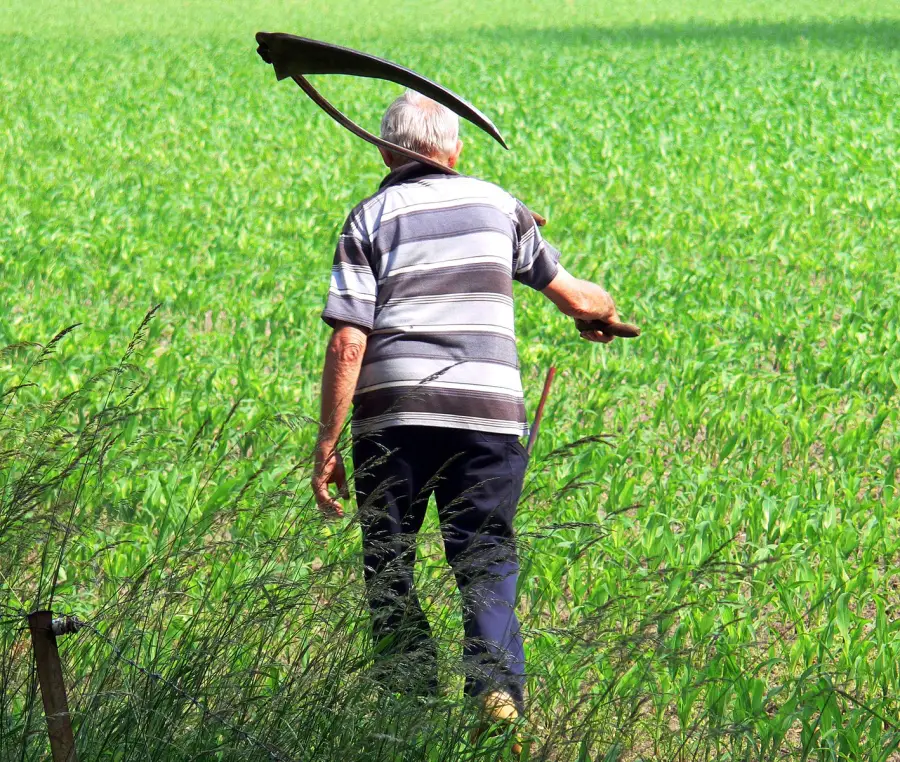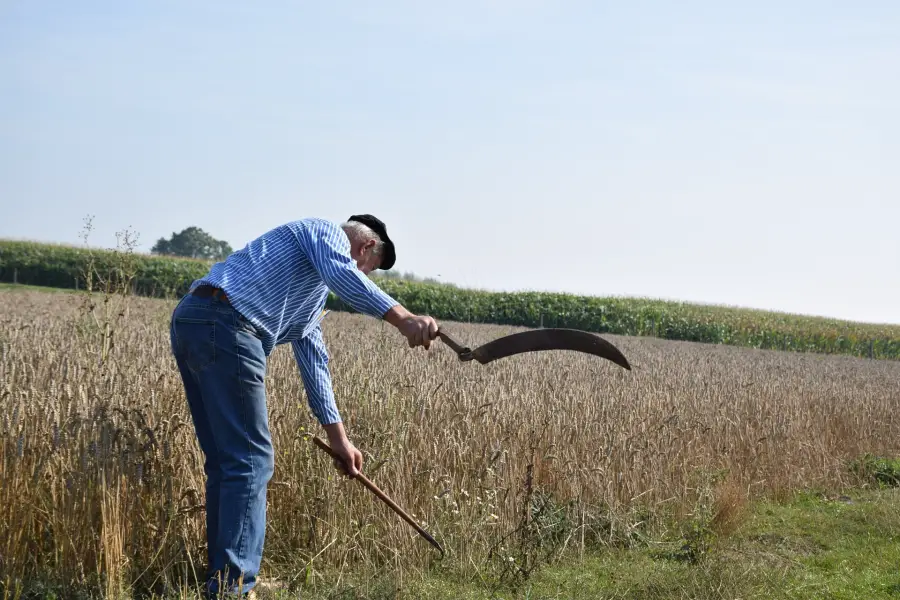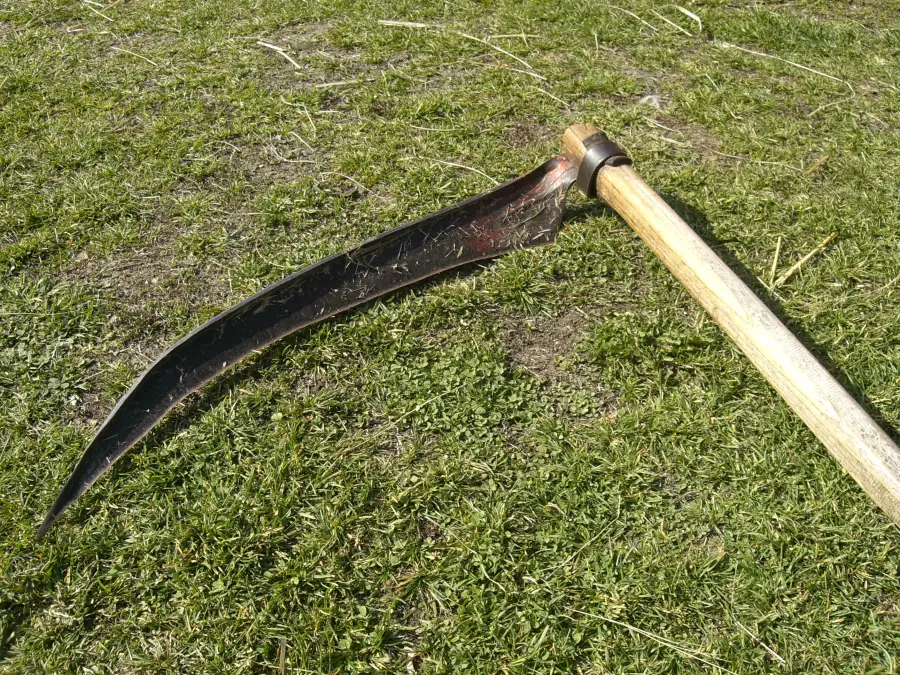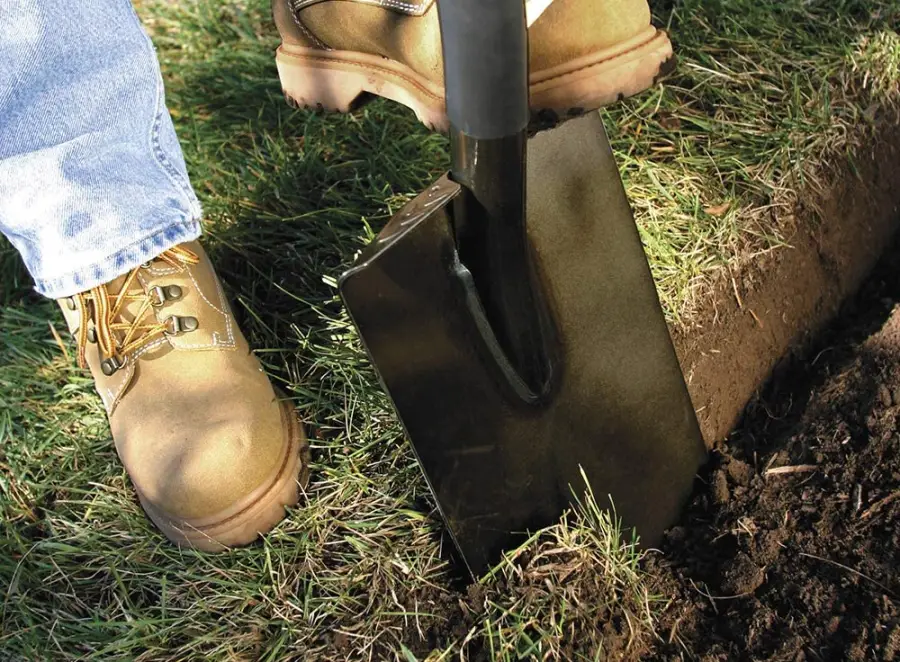Power weed wackers (or weed trimmers) have been the go-to solution for picking off weeds and edging lawns. Their efficiency makes them unrivaled tools for these particular tasks, which could take hours with more traditional tools. Yet, for those looking for a non-motorized version, is there a manual weed eater available?
There are several types of manual weed wackers on the market today. In fact, they have been around since before motorized mowers or trimmers were invented. Some require less than optimal ergonomic positions, but others are designed to make large jobs manageable.
Some situations (or an overall aversion to weed wackers) may require the use of said traditional tools. The following article discusses some of the manual approaches to managing weeds. We will also go over some of the best ways to trim weeds without a powered weed whacker. Let’s get right to it!

Contents
Is There A Manual Weed Wacker?
Most people will recognize the high pitched whine of a weed eater or weed wacker. There are some that are more than slightly disturbed by the sound. Even of those that aren’t averse to the noise, there is a curiosity surrounding alternatives. Is there a more quiet, manual version?
There are several types of manual weed wackers that do not produce the noise and fumes the motorized versions are known for. Square edged shoves, hand trimmers, sickles, or scythes can be viable alternatives. Note: These options will be more labor intensive and time consuming.
There are a few reasons why people would need a manual alternative to powered weed trimmers.
Reasons For A Manual Weed Eater
For those looking for another way to manage the edges and walks in their yard or to tame tall grasses on banks or surrounding fields, there are several considerations when choosing motorized vs manual.
Manual Equals Less Cost
One of the main reasons is cost. Weed wackers, though affordable, are not exactly cheap. Some people might not feel the need to pay the purchasing price, instead opting to borrow one or make use of manual tools. Homeowners with small yards may be even less inclined to invest in a trimmer.
Environmental Concerns Of Motorized Weed Wackers
Environmental concerns might also be a factor. You might want to get a manual weed whacker if your neighborhood has strict emissions rules. Noise concerns may also deter some homeowners from getting and using gas-powered trimmers.
Safety And Manual Weed Tools
Safety concerns are another reason why some people avoid these machines. People who have never used weed wackers before may find the prospect daunting and would rather just use a manual tool. To be fair, weed wackers can be pretty dangerous, as they can easily hurl rocks and other hard objects towards people, property, or pets.
To read more about how to maintain a great looking lawn, I recommend my other articles here…
- Round Trimmer Line Vs Square: Which One Is Better?
- Are Stihl Trimmers 4-Cycle? (Answered)
- Why Is My Echo Trimmer Bogging Down?
Manual Options For Weed Wacking
So, what can you use instead of a power weed whacker? I have included links to Amazon so you can get an idea of price ranges and styles.
Hand Trimmers
Well, for starters, you can opt for a hand trimmer. These tools are often shaped like scissors and are used in the same way to cut down weeds. Because they are hand-powered tools, you will save on the fuel and electricity costs associated with gas and electric weed wackers.
Of course, hand trimmers are far less time-efficient than powered trimmers, especially around large flower beds. Use of a hand trimmer can also be very exhausting if you are not used to it. They are more useful in small urban gardens or for use on larger stalked, single weeds.
Hedge Shears
Another manual alternative is hedge shears. With longer blades than hand trimmers, shears may just be a better tool for tackling troublesome weeds. We definitely recommend shears if you have a larger areas than an urban garden, but for most normal lawns, they may be most useful in sticking with trimming bushes.
Using shears to keep your weed problem in check is still a laborious chore that requires some getting used to. Again, it will be more useful for small areas.
Sickles

Sickles can also be used as an alternative. Although they are traditionally used for harvesting crops like wheat, sickles can also help with weeds in your yard. Their curved blades will make quick work of any weeds or stray grass blades. Sickles are very easy to handle and you can really manicure your lawn to perfection.
Unfortunately, with sickles (like hand trimmers and garden shears) you might have to spend extended periods crouched on the ground to get rid of weeds. For a lot of people, this is not the most comfortable position to be in.
If you are looking for a standing version of the sickle with a longer handle then you are going to be in the market for a scythe.
Scythes

Full-length scythes also share the sickle’s curved blade design. Although they are widely regarded as a predecessor to the lawnmower, they can also be used as a manual alternative to powered weed wackers. Like a weed whacker, a long scythe does not require you to crouch to the ground, which will spare your joints and back.
Some scythes, however, may be a bit unwieldy for some people. If you have a condition such as arthritis or are generally out of shape, using a scythe may be difficult. As long as you take care of your back, it could be a great exercise as a bonus.
Grass Whips
If you are looking for a less heavy option for taming paths, banks, or small corners of your lawn that mowers have a hard time reaching, a grass whip may be a great option for you. These long handled options have a double sided light weight blade that makes quick work of tall grasses and weeds.
The one issue here, as with many of these manual options is a lack of edging capabilities. Many use weed wackers to create crisp lines along edges between their yard and sidewalks, driveways, and flower beds.
Shovels

Square point shovels are a good option for long term edging. It takes a bit of extra effort when doing it, but the effect lasts for much longer than even motorized weed wackers.
Using a straight edged shovel along with a grass whip or scythe can be a complete solution if motorized options are not desirable of available. Taking a quarter or half inch of the sod away from edges can be a great option to create the line while a grass whip or scythe can maintain the line.
Manual Vs Motorized Weed Wackers
What are some of the pros and cons of each of these options and why would someone choose one or the other? With the main issues revolving around the motor of the powered options, what are some of the concerns?
All in all, manual alternatives are free from the problems often associated with powered weed wackers. You won’t have to worry about any starting or choke issues with these tools. You will also be able to save on the purchase, maintenance, and energy costs.
Additionally, with these weed trimming options, you do not have to replace strings. Weed wackers are also known as string trimmers because the cutting implement is a string that is spun by a powered hub. Over time, these strings snap or lose their cutting edges and need replacing, which can be costly.
Since most of the manual tools discussed have edged blades, you will only have to sharpen them from time to time. With a wide range of sharpening options, combined with the infrequency of sharpening, you will find that this is much cheaper than replacing cutting strings.
However, as we’ve said in the introduction, powered weed wackers are very efficient, in fact, more so than any of the manual alternatives. They also offer better ergonomics, with most manual alternatives requiring users to take up uncomfortable positions for extended periods.
One point in the favor of motorized versions is the rise of noise and emission-free electric trimmers that negate a lot of environmental concerns. Furthermore, the high level of competition in the trimmer market continues to drive prices down.
How Do You Trim Without A Weed Wacker?
Now that we’ve seen the tools you can use, let’s look at how you can go about trimming your lawn and weeds.
We recommend using garden shears because they have longer blades than traditional hand trimmers in and around gardens. These environments don’t lend themselves to powered or motorized weed wackers anyway. You can also use a scythe if you’re worried about your joints and back.
When tackling fields or banks, work methodically at a comfortable pace, taking breaks when needed. Manual tools give you more freedom to be creative in terms of cutting height, angles, and more. Such tools are excellent complements to a lawnmower. Just use caution and know your limitations and fitness level.
Without a lawnmower and a powered weed whacker, you could be in for some long afternoons picking out weeds and grass with hand-powered tools. The main benefit is that working like this is a heck of a workout.
You could also think about a more permanent solution.
Since weeds tend to grow around trees, bushes, and overgrown patches of lawn, you can target those areas with landscaping fabric to prevent weed growth.
Start by rolling up the layers of turf at these hotspots. Dig up to three inches underground. The next step is to lay down the fabric and cover it up with mulch or landscaping rocks. The fabric will be a barrier to any weed germination.
Once you get on top of your weed problem, don’t get complacent. Pick off weeds as soon as they sprout, otherwise, they will quickly mature and release seed heads all over your lawn.
The Final Touches On Using A Manual Weed Wacker…
You may need a couple of tools to do the same thing that a motorized weed wacker can do. If there is a need for an edged line, a shovel can do the trick a couple of times per season.
For height control of areas or edges you will also need…
- Hand trimmers
- Hedge shears
- Sickles
- Scythes
- Grass whips
It will take some practice, but soon you could have a routine that you can live with that saves money, repairs, and environmental impact.
Here are some other trimming related articles you will like…
- Round Trimmer Line Vs Square: Which One Is Better?
- Are Stihl Trimmers 4-Cycle? (Answered)
- Why Is My Echo Trimmer Bogging Down?
References
https://www.hunker.com/13405147/what-are-alternatives-to-string-trimmers
